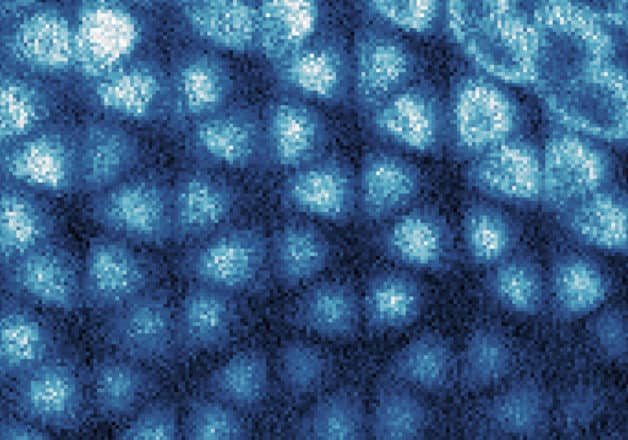More than 90 years ago, physicist Eugene Wigner predicted that at low densities and cold temperatures, electrons that usually zip through materials would freeze into place, forming an electron ice, or what has been dubbed a Wigner crystal.
While physicists have obtained indirect evidence that Wigner crystals exist, no one has been able to snap a picture of one – until now.
Physicists from Berkeley Lab and UC Berkeley recently published in the journal Nature an image of electron ice sandwiched between two semiconductor layers. The image is proof positive that these crystals exist.
“If you say you have an electron crystal, show me the crystal,” senior author Feng Wang, faculty senior scientist in Berkeley Lab’s Materials Sciences Division and UC Berkeley professor of physics, told Nature.
The Berkeley Lab and UC Berkeley team, involving physicists from the labs of Wang, Michael Crommie, and Alex Zettl, developed a new technique for visualizing the crystals, which tend to “melt” when probed. By placing a graphene sheet over the semiconductor sandwich, the team was able to probe the Wigner crystal with a scanning tunneling microscope without melting the sample and demonstrate the crystalline lattice structure, as Wigner predicted.
According to doctoral candidate Hongyuan Li and former postdoctoral fellow Shaowei Li, co-first authors of the paper, the study not only lays a solid foundation for understanding electron Wigner crystals, but also provides an approach that is generally applicable for imaging correlated electron lattices in other systems.


